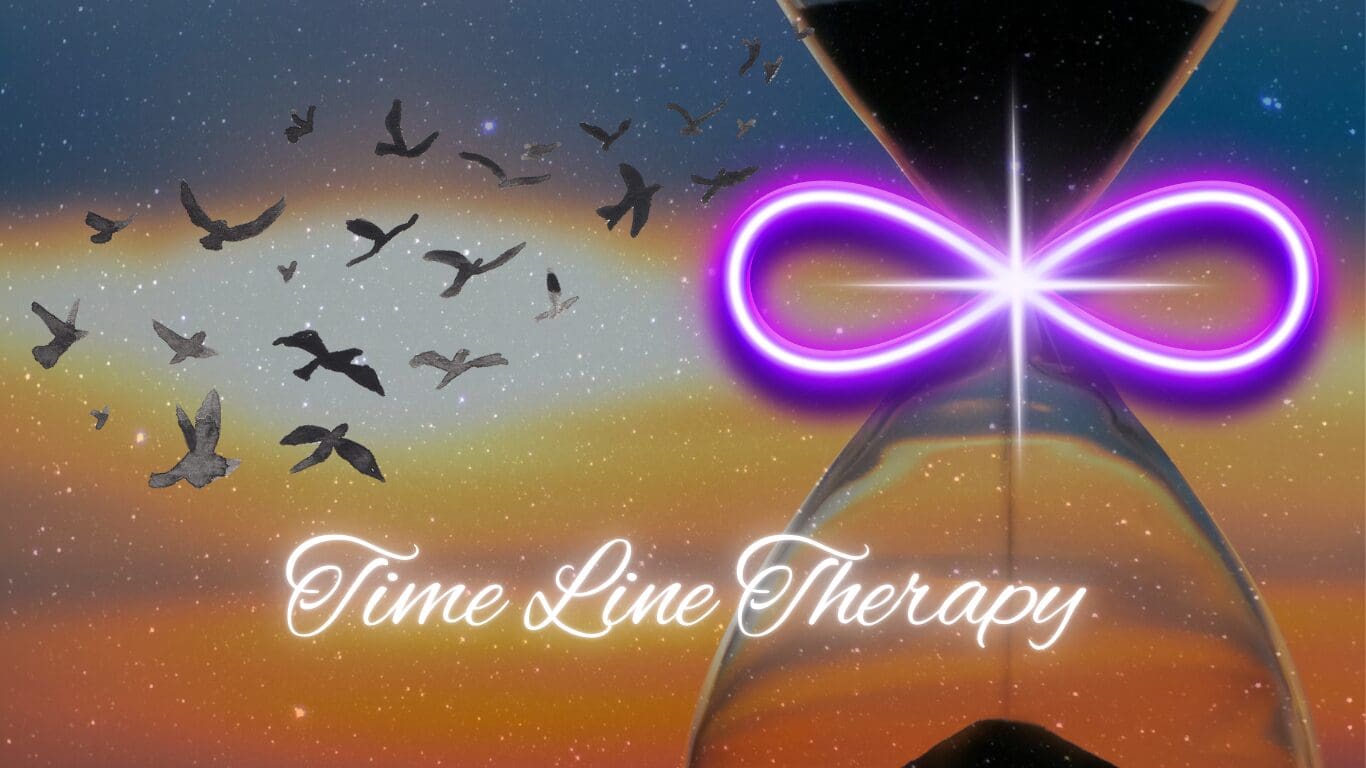
Reshape Your Future!
Time Line Therapy is an NLP technique and psychotherapeutic approach pioneered by Dr. Tad James in the 1980s. This method suggests that unresolved past experiences can negatively impact one's present life. The therapy engages the unconscious mind to help individuals release negative emotions associated with past events and alter their internal mental processes. It is representive of an individual's internal archive of experiences that shape their perception of the past and future.
Time Line Therapy is an approach to emotional mastery and personal transformation. This technique empowers individuals to gain greater control over their emotions, facilitating the release of anger, sadness, fear, hurt, and guilt. By addressing these emotional burdens, practitioners can experience a profound sense of liberation and emotional freedom.

Time Line Therapy is an approach to emotional mastery and personal transformation. This technique empowers individuals to gain greater control over their emotions, facilitating the release of anger, sadness, fear, hurt, and guilt. By addressing these emotional burdens, practitioners can experience a profound sense of liberation and emotional freedom.


This therapeutic method extends beyond emotional regulation to tackle limiting beliefs that hinder personal growth and self-actualization. It specifically targets and dismantles self-imposed constraints, such as feelings of unworthiness, that may have long restricted an individual's potential and self-perception.

This therapeutic method extends beyond emotional regulation to tackle limiting beliefs that hinder personal growth and self-actualization. It specifically targets and dismantles self-imposed constraints, such as feelings of unworthiness, that may have long restricted an individual's potential and self-perception.

What is NLP?
Neuro-Linguistic Programming (NLP) is a powerful approach to personal growth and communication that emerged from the groundbreaking studies of Richard Bandler and John Grinder, set out to uncover the secrets of highly effective therapists and communicators, distilling their findings into practical techniques anyone can learn.
It examines the intricate dance between our thoughts, language, and actions and how they influence our experiences. NLP offers techniques to modify mental patterns, helping people communicate better, overcome obstacles, and reach their goals. By analyzing successful behaviors, NLP provides tools to enhance learning, relationships, and performance in various aspects of life.
What is Eye Movement Integration?

This amazing NLP technique is effective in treating all kinds of stress, PTSD, and other negative patterns such as addiction. This neurotherapeutic technique works with eye movements to help “unfreeze” trauma and integrate emotions very quickly.
Eye Movement Integration practitioners use guided eye movements combined with cognitive processing to help individuals process and integrate traumatic memories or difficult experiences. Its purpose is to reduce emotional distress associated with traumatic memories. The therapist guides the client's eye movements while discussing the traumatic event. These eye movements can help access and process information stored in different parts of the brain. While the process typically involves multiple sessions, many people report significant stress reduction even after a single session. This technique is often used in this program with other modalities and when integrating healing.
What is the history of EMI?
Eye Movement Integration (EMI) research began in the 1980s. It was developed by Steve and Connirae Andreas, and draws inspiration from Neurolinguistic Programming and shares similarities with Eye Movement Desensitization and Reprocessing (EMDR). The Andreas formalized EMI throughout the late 20th century, introducing it to the psychological community through their book "Heart of the Mind" in 1989.
As EMI gained traction among therapists, particularly those versed in NLP, its application spread. While not as mainstream as EMDR, EMI has been the subject of a lot research studies examining its effectiveness. It was founded to be quite effective and remains a lucrative field utilized by practitioners worldwide.
What is Eye Movement Integration?

This amazing NLP technique is effective in treating all kinds of stress, PTSD, and other negative patterns such as addiction. This neurotherapeutic technique works with eye movements to help “unfreeze” trauma and integrate emotions very quickly.
Eye Movement Integration practitioners use guided eye movements combined with cognitive processing to help individuals process and integrate traumatic memories or difficult experiences. Its purpose is to reduce emotional distress associated with traumatic memories. The therapist guides the client's eye movements while discussing the traumatic event. These eye movements can help access and process information stored in different parts of the brain. While the process typically involves multiple sessions, many people report significant stress reduction even after a single session. This technique is often used in this program with other modalities and when integrating healing.
What is the history Of EMI?
Eye Movement Integration (EMI) research began in the 1980s. It was developed by Steve and Connirae Andreas, and draws inspiration from Neurolinguistic Programming and shares similarities with Eye Movement Desensitization and Reprocessing (EMDR). The Andreas formalized EMI throughout the late 20th century, introducing it to the psychological community through their book "Heart of the Mind" in 1989.
As EMI gained traction among therapists, particularly those versed in NLP, its application spread. While not as mainstream as EMDR, EMI has been the subject of a lot research studies examining its effectiveness. It was founded to be quite effective and remains a lucrative field utilized by practitioners worldwide.

